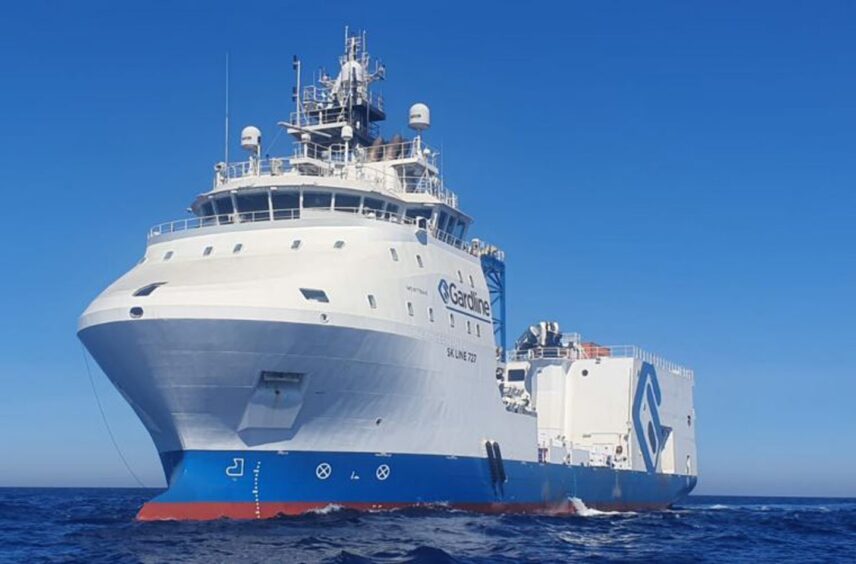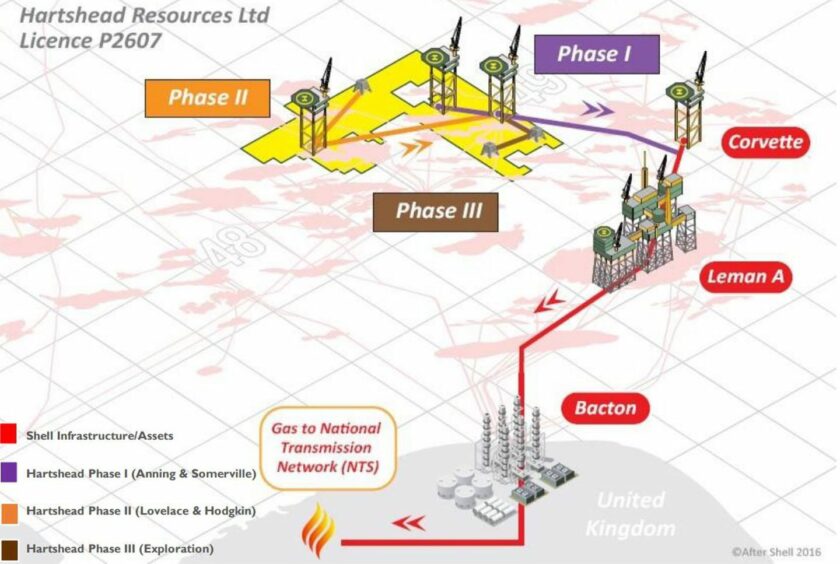
Hartshead Resources says survey work has been completed on the route of a proposed gas pipeline for its southern North Sea development, with engineering work to be awarded next year.
The Australian-listed explorer (ASX:HHR) reported this week that the Gardline Ocean Observer had completed its month-long survey campaign of offtake routes for gas production from the Anning and Somerville fields.
Kicked off in September, the survey saw over 1000 km of seismic lines run and 52 cone penetration tests (CPT) and 23 vibrocores taken to help define the seabed status. In addition 27 seabed samples and camera transects were taken to identify any habitats and provide input to the environmental baseline survey.
It marks the next step for the development after the completion of a key farm-out earlier this year, in which Viaro, the owner of Rockrose Energy, agreed to buy a majority stake in Licence P2607 from Hartshead Resources in a “landmark” £105 million deal.
Under the agreement, Viaro/Rockrose became a 60% owner of the Anning and Somerville fields, as well as Hodgkin and Lovelace, though Hartshead retained operatorship.
The partners have outlined a three-phase development plan for infrastructure around the prospects, the first portion of which they hope to tap 2P reserves of 301.5 billion cubic feet of gas, equivalent to around 52 million barrels of oil.
The partners plan to drill six production wells at the former two fields from two normally unmanned installations (NUI). These will be tied back to Shell’s Leman Alpha installation, allowing for onward transportation and processing to Bacton, and into the gas network.
Hartshead submitted a field development plan for the cluster this summer, ahead of a final investment decision reportedly slated for Q4 this year and a target of first gas in 2025.
Pipeline EPCI in early 2024
The material recovered from the latest survey will undergo laboratory analysis, with results expected to be reported early in 2024, the operator said. This will feed into its environmental statement for the Anning and Somerville development.
A full survey report is also being prepared, which will then be used to support an invitation to tender for the pipeline EPCI work. Hartshead said this has already been offered to “five internationally recognised pipeline and subsea installation contracting companies”.
Responses to the invitation are expected before the end of the year, and will then be evaluated, with an award expected in “early 2024.”
Hartshead CEO Keith Bush said: “We would like to thank the team involved in performing the survey work with extreme diligence and attention to safety, working in rapidly changing weather conditions and showing remarkable flexibility when changes to the programme were required.
“The data gathered will allow us to progress the Environmental Statement as planned and ensure that tenders for the pipeline contracts reflect the real conditions on the seabed.”
Phase 2 plans
Meanwhile, a recent search note from advisory group Cavendish suggest further Phase 2 development plans are also promising, while Hartshead trades at a “substantial discount” to its suggested target price.
After Anning and Somerville the pair intend to tap a further 139 bcf of 2C contingent resources across the Hodgkin and Lovelace fields.
Cavendish reports that Hodgkin is expected to be developed via a two-well normally unmanned platform with a pipeline to Somerville at a gross capex of around £150m.
Meanwhile Lovelace is expected to be developed via a single production well tied back to Hodgkin, with first production assumed to commence in 2028, a year-after Hodgkin.
Looking to Phase 3, a recent Hartshead corporate presentation highlights an Xodus Group exploration study identifying 12 new exploration prospects around the licences, including those such as Garrod, Ayrton, Stephenson and McLaren.
Cavendish analysts suggest there is even the potential for some of these – such as McLaren – to be drilled as part of Hartshead’s Phase I development given their proximities to Somerville and Anning, “crystallising value prior to the Phase II development.”
 © Supplied by Hartshead
© Supplied by Hartshead